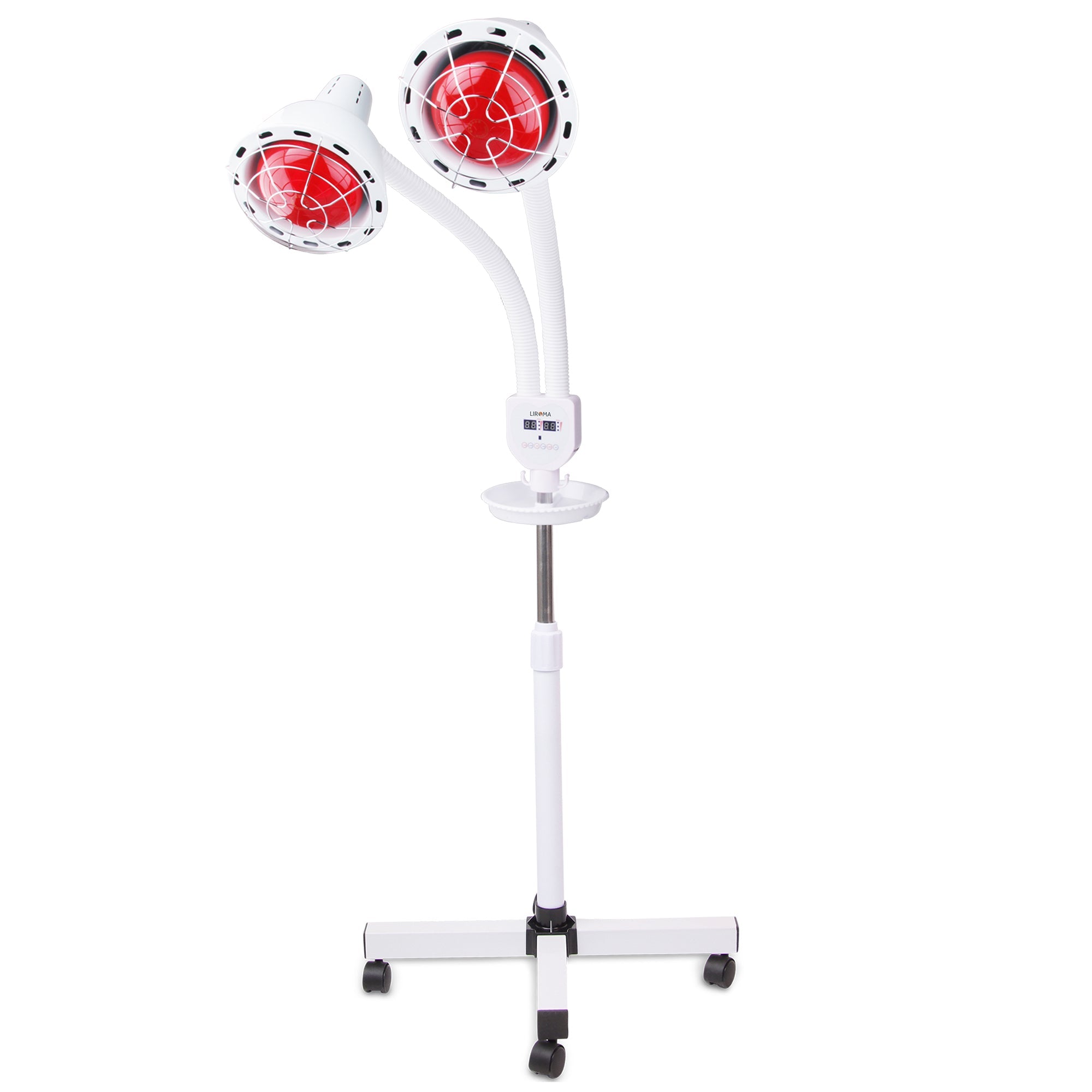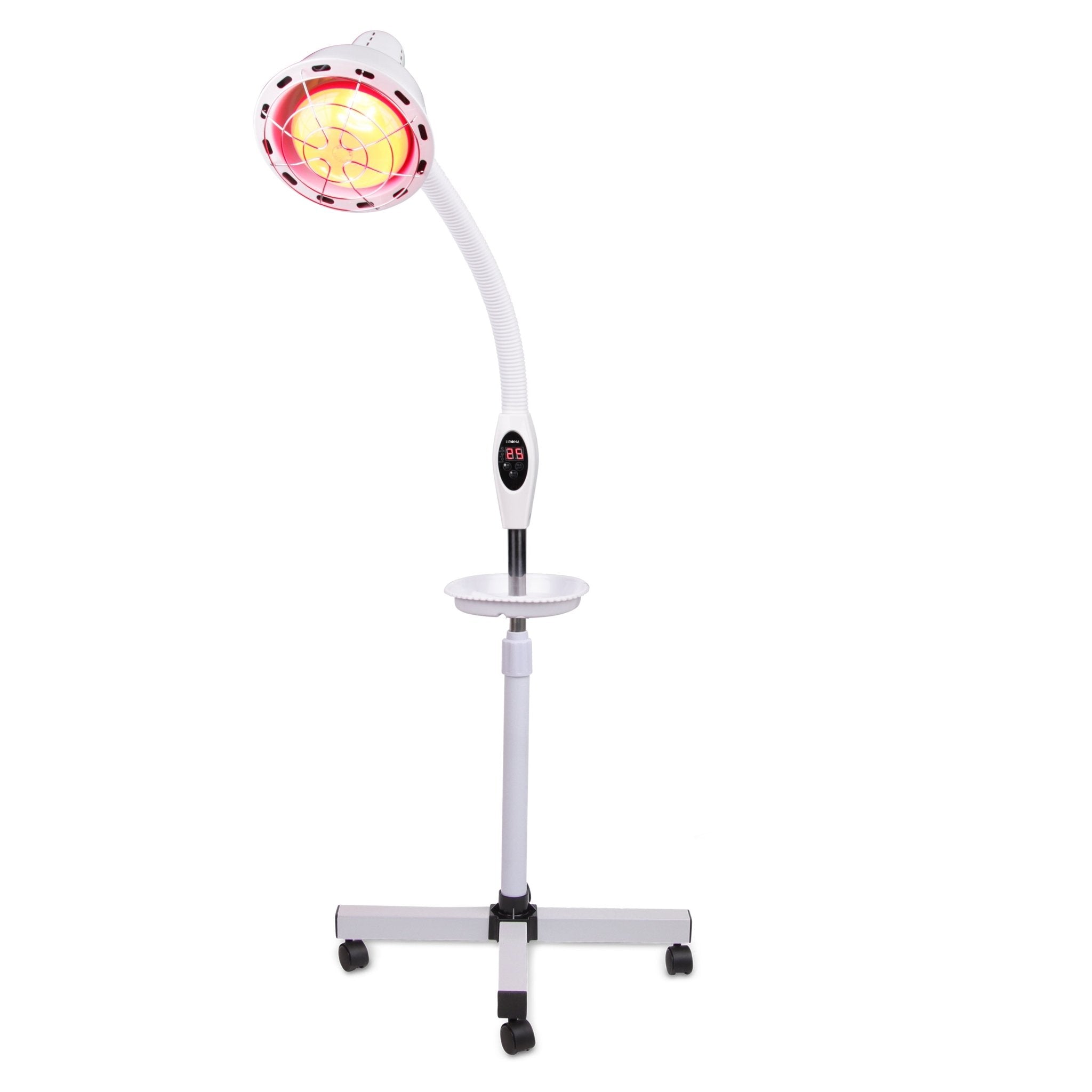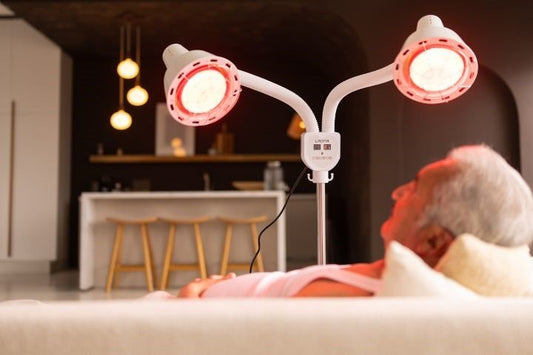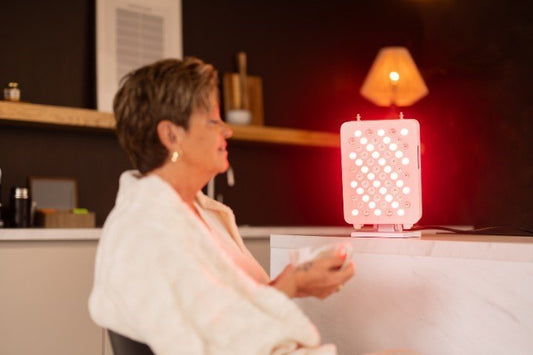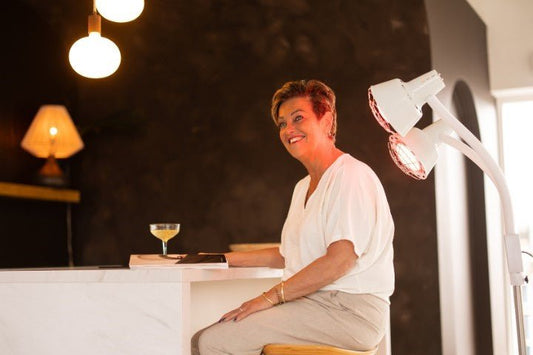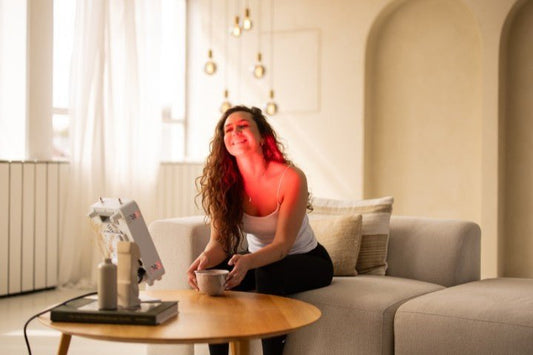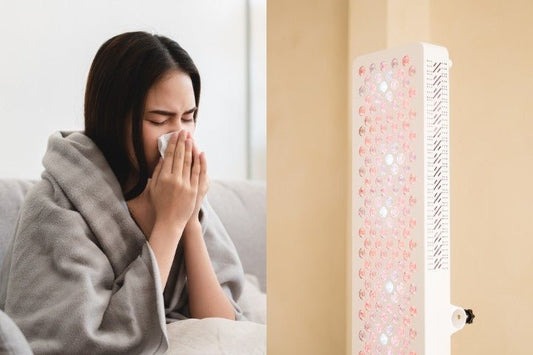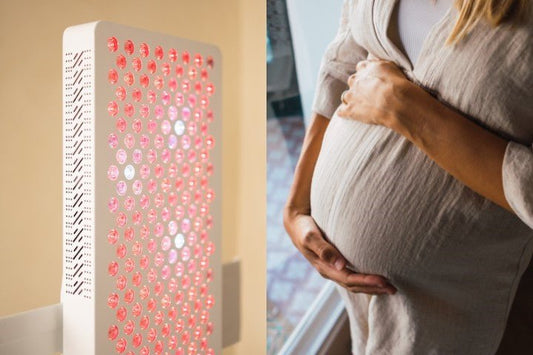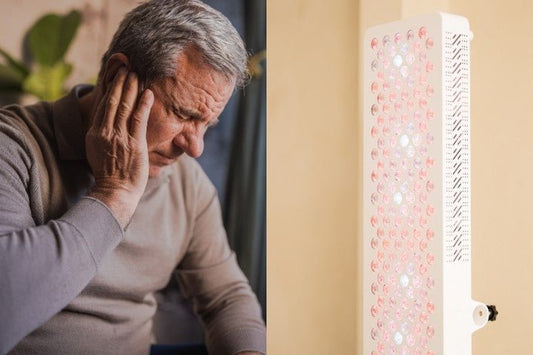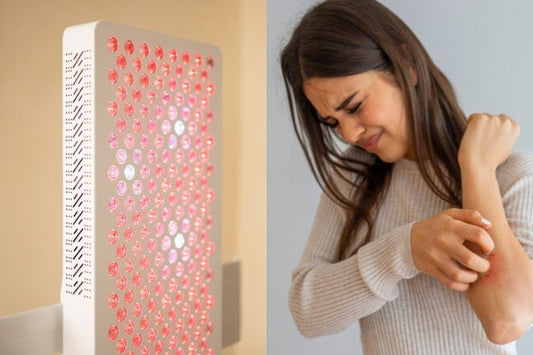Muscle pain, stiff joints, slow recovery or reduced athletic performance ... recognizable? Then you've probably heard of light therapy, such as red light therapy or infrared lamps.
This modern technology is not only embraced by elite athletes, but is increasingly being used by people with muscle and joint pain. Find out here what light therapy is, how it works and how it can help you relax, recover and reduce pain.
Caution! The text below does not serve as medical advice. This text was compiled based on our own knowledge, customer experiences and various online sources.
Table of contents
What exactly is light therapy?
Scientific research: how does it work?
Light therapy and sports performance
Muscle relaxation and relief
Faster recovery after training or overexertion
Pain relief for muscle complaints
Red light or infrared light for back pain
Light therapy for joint pain and arthritis
Here's how to get the most out of your light therapy
Overview: which type of light therapy for which complaint?
Frequently Asked Questions

What exactly is light therapy?
Light therapy uses specific wavelengths of light, visible red or invisible near-infrared, that penetrate deep into your skin and muscles. There, they stimulate a variety of biological processes, such as cell repair, blood circulation and anti-inflammation.
The most commonly used forms are:
- Red light (630-660 nm): Stimulates cell functions and increases energy production (ATP).
- Near infrared (NIR, 830-850 nm): Penetrates deeper than red light and acts on deeper muscle and connective tissue.
- Infrared heat (IR-A through IR-C): Commonly used in heat lamps and focuses primarily on relaxation through heat.
**NM stands for nanometer (1 nanometer = one billionth of a meter (0.000000001 meters)
Which type of light is most appropriate depends on your complaint or goal, which we discuss in detail below.
Scientific research: how does it work?
Multiple studies show that light therapy has a measurable effect on muscle tissue. By applying specific wavelengths of red light and near-infrared light, biological processes in muscle cells are activated. This leads to, among other things:
- Increased production of ATP (your cells' energy molecule);
- Reduced inflammation in muscle tissue after exercise or overexertion;
- Stimulation of cell renewal and repair of damaged muscle tissue;
- Improved blood circulation, allowing muscles to recover faster;
- A reduction in pain impulses, as nerve conduction is more efficient.
So it is not a placebo: there is a solid scientific basis under this treatment method.

Light therapy and sports performance
Want to get more out of your workout? Light therapy helps your muscles recover faster and even improve your performance.
Why does this work so well in sports?
- Increases oxygen uptake in muscles
- Reduces lactic acid buildup
- Helps prevent muscle fatigue
- Improves muscle strength and endurance
Recommended type of light: red light + near infrared (NIR)
Many athletes use it immediately before or after training. Some top sports teams even have red light beds in their recovery rooms.
Muscle relaxation and relief
After an intense day or workout, your muscles feel tense, tired or heavy. Light therapy helps your muscles relax faster and become more flexible.
How does that work?
- Heat provides immediate relaxation of tense muscles
- Deep radiation stimulates circulation and removal of waste products
- Muscle cramps and stiffness are reduced
Recommended type of light: infrared heat (IR-A)
IR-A radiation (short wave) is especially effective for deeper muscles and joints. You feel this type of therapy as a pleasant, soothing warmth.

Faster recovery after training or overexertion
Light therapy supports the natural recovery process of your muscles after exercise.
Because of this:
- Are microtraumas in the muscles repaired faster
- Lactic acid is removed faster
- Cells get more energy to repair
Recommended type of light: red light + NIR
Many users notice less muscle soreness and faster recovery, especially with regular use after exercise.
View lamps for muscles and joints
Pain relief for muscle complaints
Do you often suffer from muscle pain, stiff muscles or chronic complaints such as fibromyalgia? Light therapy works naturally to relieve pain.
How then?
- Reduces inflammation in muscle tissue
- Stimulates the production of endorphins (natural painkillers)
- Improves nerve conduction, attenuating pain signals
Recommended type of light: red light + NIR
Both acute muscle pain and long-term symptoms can be effectively addressed with this form of light.

Red light or infrared light for back pain
Back pain is one of the most common muscle complaints and can be caused by strain, incorrect posture or stress. Light therapy offers effective, natural support in this regard. Both red light and infrared heat can help relieve back pain.
- Stimulates blood flow to deep muscle layers
- Reduces muscle tension and stiffness
- Relieves pain and supports recovery of muscle and connective tissue
- Can relieve chronic back pain, such as from osteoarthritis or herniated discs
Recommended type of light: near infrared (NIR) + infrared heat (IR-A)
For deep back muscles or chronic back pain, a combination of deep radiation and heat is most effective. For acute back pain, it is best to start with shorter sessions and gradually build up the intensity.
Light therapy for joint pain and arthritis
It is also widely used for joint complaints such as osteoarthritis and rheumatoid arthritis. The goal? Less pain, more mobility.
- Reduces inflammatory reactions in joints
- Increases lubrication and flexibility
- Relieves stiffness and swelling
Recommended type of light: NIR + possibly infrared heat (IR-A).
For superficial joint pain (such as fingers or knees), NIR is often sufficient. For deeper joints, heat can be supportive.

Here's how to get the most out of your light therapy
Want to get started yourself? Then follow these tips:
- Use the lamp 3 to 5 times a week
- Aim the light directly at the skin (distance: ±15-30 cm)
- Hold on: 10-20 minutes per zone
- Do not treat too many zones at once
- Be consistent and give it at least 2 to 4 weeks
Always consult a doctor in case of serious symptoms or doubt.
Overview: which type of light therapy for which complaint?
| Complaint/Application | Recommended light | Best wavelength | Additional info |
| Muscle relaxation | Infrared heat | IR-A (760-1400 nm) | Works via heat; relaxes muscles immediately |
| Muscle recovery after training | Red light + NIR | 630 - 850 nm | Stimulates cell functions and ATP production |
| Improve sports performance | Red light + NIR | 630 - 850 nm | Use before and after training |
| Relieve muscle pain | Red light + NIR | 660 + 850 nm | Reduces pain and inflammation |
| Joint Pain | NIR + IR-A | 830 nm + heat | Combine deep radiation and relaxation |
| Fibromyalgia / chronic pain | Red light + NIR | 660 + 850 nm | Regular use recommended |

Frequently Asked Questions
Are there any side effects?
It is safe and painless in most cases. When used correctly, side effects are rare. At most, think slight redness or temporary warmth on the skin. In doubt or do you have a medical condition? If so, always consult a doctor.
Learn more about the safety and possible side effects of light therapy
Is light therapy a panacea?
No and yes. Light therapy is not a magic solution that cures everything at once. But it is a particularly powerful support for muscle and joint problems, provided you use it regularly and combine it with:
- Exercise
- Sufficient rest
- Hydration
- Healthy diet
So it is not a replacement for a healthy lifestyle, but it is a valuable addition.
Can I combine it with other treatment methods?
Yes, light therapy can be perfectly combined with physical therapy, massage, heat/cold treatments or supplements, for example. It works to support, not replace.
Can I treat multiple body parts in one session?
Yes, you can. In that case, just keep to the recommended treatment time per area. Preferably do not treat all areas at once, so that your body can process the stimuli properly.
Does light also help with nerve pain or tingling?
Light therapy can in some cases provide relief from mild nerve complaints by improving nerve conduction. Serious nerve problems require medical advice.
What if I don't notice results after a few sessions?
Give it time. For many users, noticeable results come only after 2 to 4 weeks of consistent use. Also see if you are using the light at the right distance and duration.






